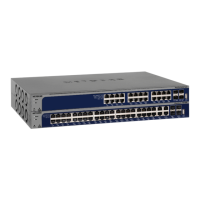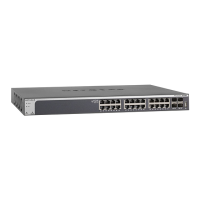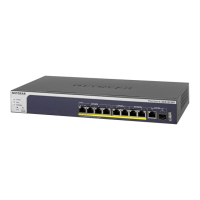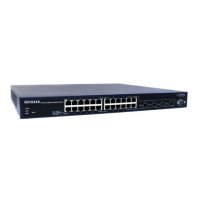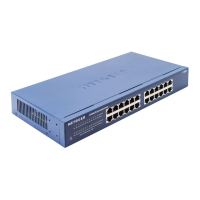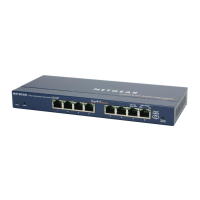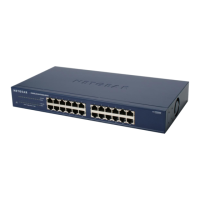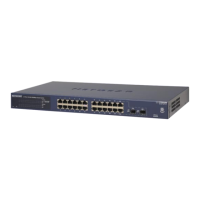Configure Routing
226
XS708T, XS712Tv2, and XS716T Smart Managed Pro Switch User Manual
8. Click the Apply button.
The updated configuration is sent to the switch. Configuration changes take effect
immediately.
9. To refresh the page with the latest information about the switch, click the Update button.
The following table describes the nonconfigurable data that is displayed.
Configure Address Resolution Protocol
The Address Resolution Protocol (ARP) associates a Layer 2 MAC address with a Layer 3
IPv4 address. The switch supports both dynamic and manual ARP configurations. With
manual ARP configuration, you can statically add entries into the ARP table.
ARP is a necessary part of the Internet Protocol (IP) and is used to translate an IP address to
a media (MAC) address, defined by a local area network (LAN) such as Ethernet. A station
that must send an IP packet must learn the MAC address of the IP destination, or of the next
hop router if the destination is not on the same subnet. This is achieved by broadcasting an
ARP request packet, to which the intended recipient responds by unicasting an ARP reply
Table 63. Learned Routes information
Field Description
Network Address The IP route prefix for the destination.
Subnet Mask Also referred to as the subnet/network mask, this indicates the portion of the IP interface
address that identifies the attached network.
Protocol This field states which protocol created the specified route. The possibilities are one of the
following:
• Local
• Static
Route Type This field can be Connected, Static, or Dynamic, depending on the protocol.
Next Hop Interface The outgoing router interface to use when forwarding traffic to the destination.
Next Hop Address The outgoing router IP address to use when forwarding traffic to the next router (if any) in
the path toward the destination. The next router is always one of the adjacent neighbors
or the IP address of the local interface for a directly attached network.
Preference The preference is an integer value from 0 to 255. The user can specify the preference
value (sometimes called administrative distance) of an individual static route. Among
routes to the same destination, the route with the lowest preference value is the route
entered into the forwarding database. By specifying the preference of a static route, you
control whether a static route is more or less preferred than routes from dynamic routing
protocols. The preference also controls whether a static route is more or less preferred
than other static routes to the same destination.
Metric Administrative cost of the path to the destination. If no value is entered, default is 1. The
range is 0–255.

